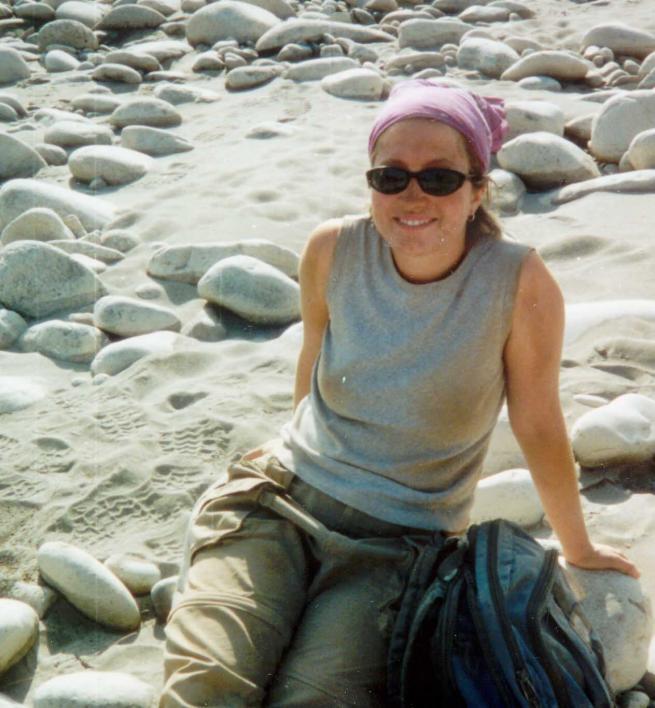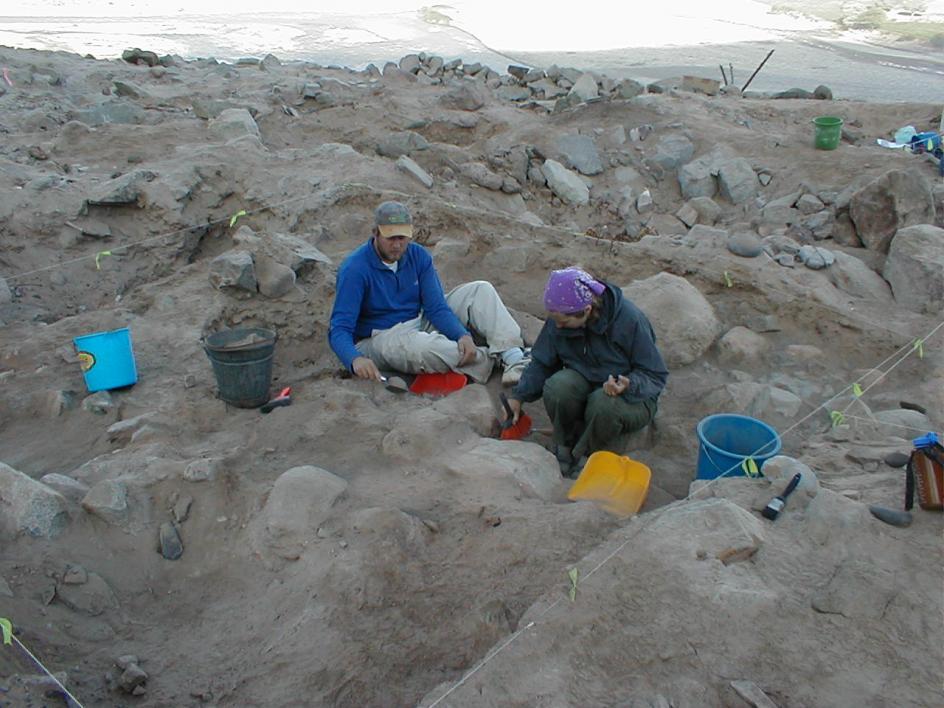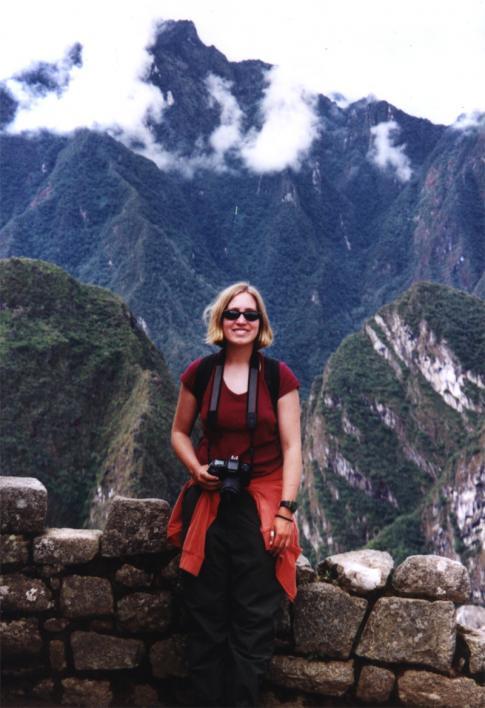Putting past lives under the microscope to preserve and share ancient stories

A 2,000-year-old handprint changed the course of Kelly Knudson’s life.
As a young undergraduate student, an unexpected connection with an ancient culture turned a passing interest in archaeology into a vibrant career. Now, as a bioarchaeologist and professor in Arizona State University's School of Human Evolution and Social Change, she not only teaches her own students through practical lab experience, she has even written a book on the subject — "Principles of Archaeology."
“Bioarchaeology is the study of humans who lived in the past by examining both their skeletons and their archaeological context, which includes the artifacts they used and the sites they lived in,” she explained. “It is such a privilege to learn how people lived long ago and use those lessons to better understand challenges facing humans today.”
Yet it wasn’t until midway through her bachelor’s degree that Knudson even realized being an archaeologist was a potential career option.
On the hunt for social science credits, she happened to spend a summer at an undergraduate field school in northern Chile, where she helped excavate circular clay houses made nearly two millennia before.
“The people who made them decorated them with their handprints and other designs,” she said. “It was so awe-inspiring to see the personal mark of someone who lived so long ago.”
By the end of that summer, Knudson was hooked and decided to change her focus from chemistry and math to archaeological chemistry.
Many additional experiences in archaeology cemented her passion for the field. Her interests took her to Machu Picchu, for example, which she initially expected to be crowded and overrated.
“I couldn’t have been more wrong! It was absolutely amazing,” she said.
Now, Knudson is paying it forward by providing others with hands-on opportunities. Her position as the director of the Center for Bioarchaeological Research allows her to help students find laboratories and field schools where they can learn the ins and outs of this still largely uncharted field.
And more than 60 undergraduates have studied as apprentices in the lab where Knudson does her research on pre-Colombian social identity in the Andes region of South America, the Archaeological Chemistry Laboratory. There, they learn how to analyze archaeological samples, like bone, textiles and soil, from all over the world in order to understand ancient peoples’ health, cultures and environments.
Much of the lab’s work involves preparing these samples for isotopic and elemental analysis — processes that reveal the atomic makeup of a sample. This information, found with the help of a variety of special equipment, from a freeze-dryer to a furnace, can give researchers incredible insights.
“I may not be able to tell you the names of people who lived long ago, but we can learn what they ate, where they lived, what their health was like and what may have been important to them,” Knudson said.
It is the love of these rigorous methods in the lab, combined with a curiosity about the mystery of human lives, that Knudson believes is the heart of every bioarchaeologist.

ASU Professor Kelly Knudson works with a student in the Archaeological Chemistry Laboratory.
“Bioarchaeology and archaeological chemistry draw people who are interested in both the physical sciences and the messiness inherent in studying humans,” she said. “On the one hand, we wear white lab coats and do very scientific work, but on the other, we are out getting dirty in the field and studying humans in all their complexity.”
Knudson doesn’t just protect the ancient knowledge unlocked through her work, she shares it, often in equally innovative ways. In her recent book, for example, archaeological project sections challenge readers to solve ancient puzzles with the available evidence, while videos of Knudson in her lab take viewers through some of the same demonstrations she gives her students in person.
“I hope that people will get a better sense of what archaeology is like, particularly archaeological chemistry and bioarchaeology, though the videos,” she said. “Because of Indiana Jones, archaeology sometimes seems flashier than it is, and shows like 'Bones' and 'CSI' also make the laboratory work seem much faster than it would be in real life.”
But perhaps the ultimate lesson Knudson teaches students — in the book and in person — is the unique set of ethical concerns that archaeologists have to consider, such as public outreach, working with descendant groups and preserving the history they uncover.
“The archaeological record is irreplaceable, so protecting our past and its value for our future is one of the most important things we do in this field,” she said.
More Science and technology

Breakthrough copper alloy achieves unprecedented high-temperature performance
A team of researchers from Arizona State University, the U.S. Army Research Laboratory, Lehigh University and Louisiana State…

4 ASU researchers named senior members of the National Academy of Inventors
The National Academy of Inventors recently named four Arizona State University researchers as senior members to the prestigious…

Transforming Arizona’s highways for a smoother drive
Imagine you’re driving down a smooth stretch of road. Your tires have firm traction. There are no potholes you need to swerve to…




